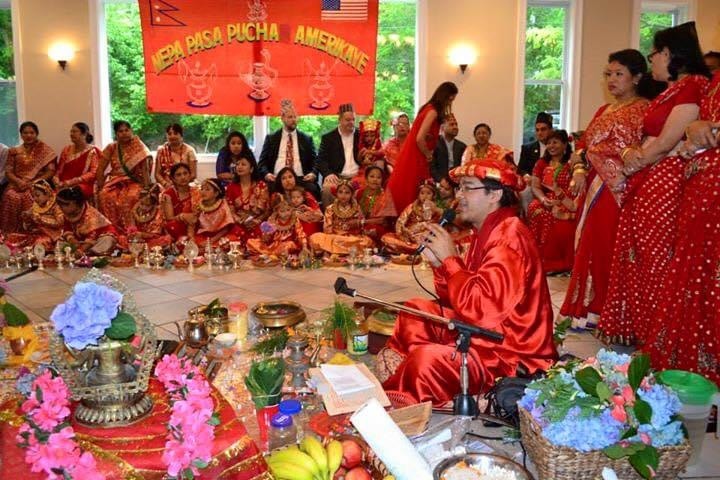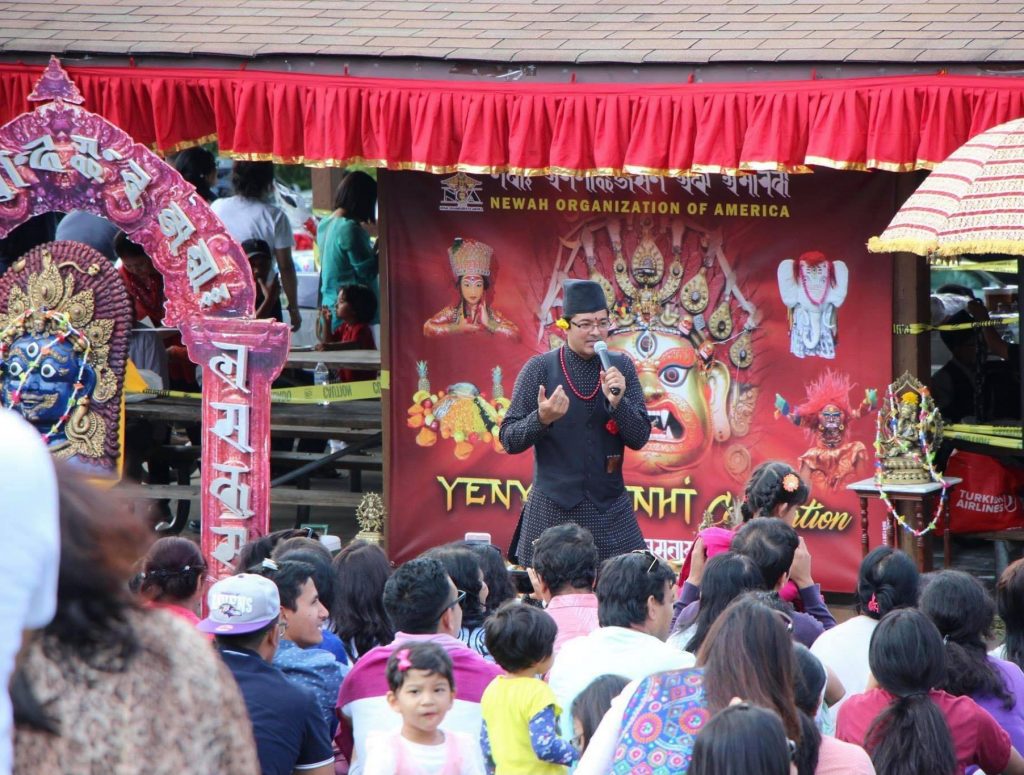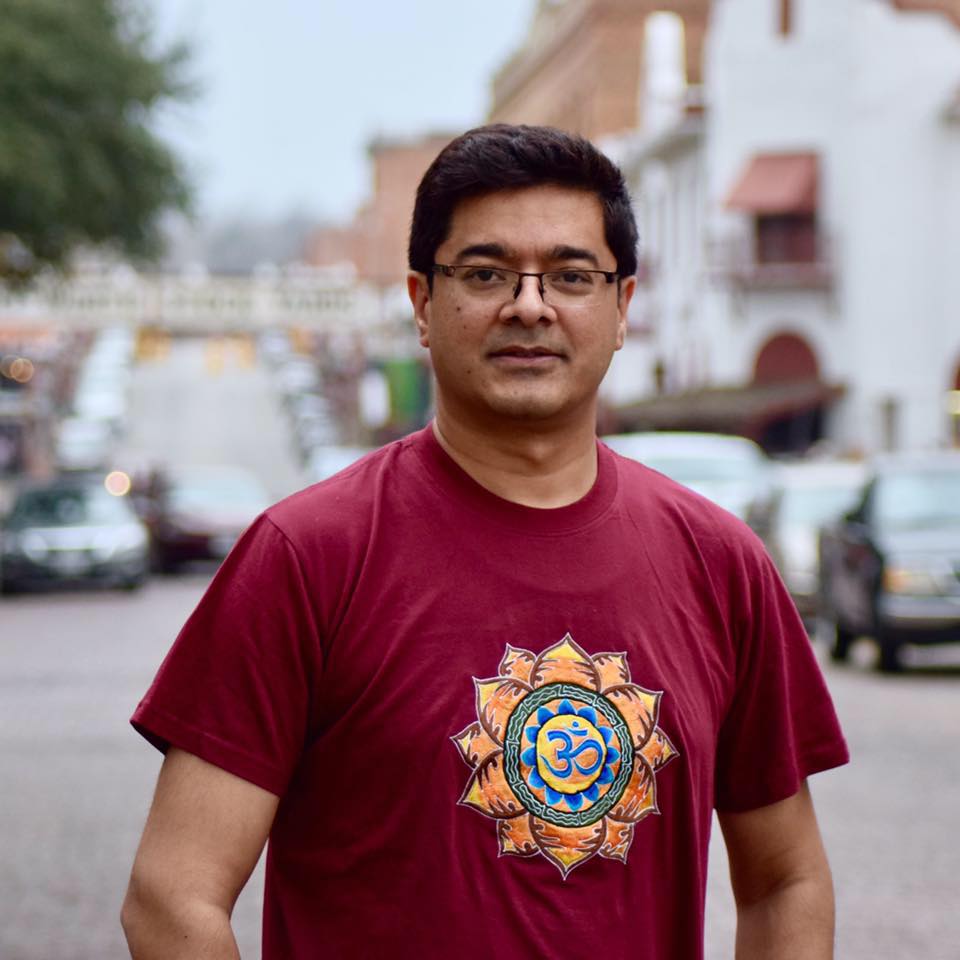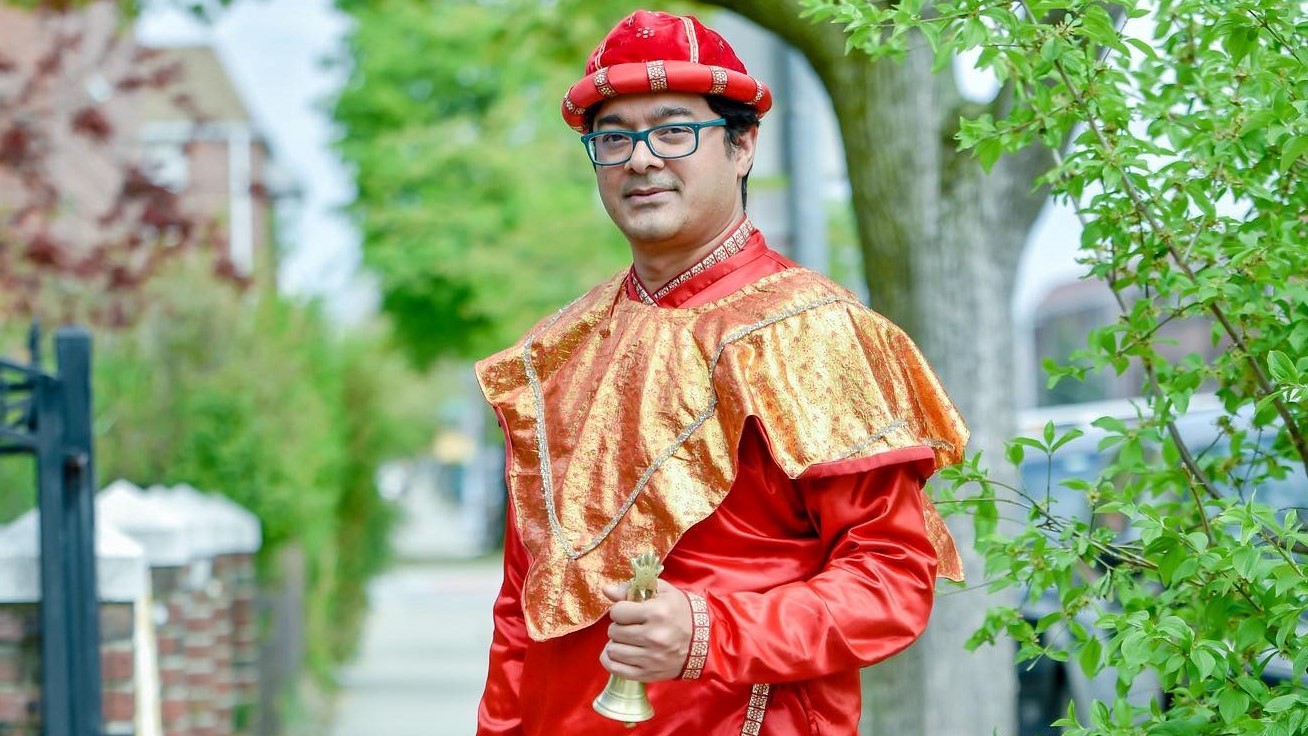In a house in Virginia, the United States, Basav Juju Rajopadhyay in a jama and bhoto sits and performs an ih (a ritual for young girls in the Newa community). He conducts the ceremony in such a manner that the child does not get restless. She is nervous given all the attention on her, but she sits through the entire process calmly, listening to Rajopadhyay who even explains what they are doing there and why. As soon as he finishes, he rests for a while and he is on his way to a new city to do something similar.
He has been on the move for the past two months.
“You can’t force things on children. If you do, they’ll never try to follow our culture willingly. And unless they do, our culture will never survive,” he says.
For nearly a decade, Rajopadhyay has been relentlessly busy. A priest by profession, he is hardly in his home in Dallas, Texas. Every week he is on the move. One day, he is in New York in the east and the next, he is flying to Seattle in the west. Every year, he conducts rituals in over 150 homes spread across the US and has travelled to 48 out of 50 US states performing traditional Newa rituals and promoting them along the way. Now after nearly 15 years, he hopes that he can help save the culture from disappearing from the homes of Newa people who relocated to the US from Kathmandu valley.
“If we don’t do something now, our culture, like the dinosaur, will only be found in museums,” he says. “This is a part of the job and I’ve learnt to enjoy it.”
From priesthood to preisthood

Rajopadhyay was born in Nhyokha Tole in Kathmandu to Achyutananda Rajopadhyay and Sri Laxmi Rajopadhyay. Curious from an early age, he had a knack for storytelling and Newa culture. As his family were the chief priests of the Taleju Temple, he was brought up in a conservative family and as a result, picked up priesthood from his father naturally.
By 13, he would do rituals at various places, and by the time he was 20, he had become really good at it. But, as a child, he would always be curious about why he was doing what he was doing. He always looked to question things and looked for answers to those questions.
He completed his bachelors in anthropology and management, after which he completed his MBA. But, he wanted to learn more, which is why he left for Germany to get another master in metaphysics. After his master in metaphysics, he had left for the US in 2007 to be a part of a university programme. After its completion, he heard about the Newa population living on the US’s east coast. He contacted them to learn about how things were and to his surprise, a few people asked him to stay in the US.
“They told me they need a person like me and that I should consider relocating to the US. It was quite shocking but I really thought about it hard because it was a great opportunity.”
He thought about it a lot and when he was 27, left Nepal for the US. But, when he went there, it was not easy in the beginning as the scene was not as promising. He quickly realised that any work was not going to come to him as much as he wanted, so he hustled. He worked whatever jobs he got. He worked at restaurants, sandwich joints and even started his own business.
“It was quite frustrating in the beginning. I even applied for permanent residency in Canada and got it, but my mother asked me to stay in the US.”
Gradually things started to get better. And, he started to expand his network. He started getting calls to come to perform ceremonies like marriages, janko, ih and bratabandha. But, most of this was limited to the east coast as that was where most Newa people who came from Kathmandu valley lived.
“The others (Newas from outside the valley) are not as accustomed to Newa culture. I don’t say it in a bad way, but Newa outside the valley have adopted a different culture because they’ve been away from the valley. But, that’s okay too.”
Connecting people to their culture

By 2013, his popularity had risen as he started getting calls from everywhere around the US. He would go to California, Texas, New York and Washington DC. Things got so good for him that a family even brought their daughters to the US in 2016 to do the ih ceremony there.
“That has to be one of my most special memories.”
Another memory he recalls is of an old woman crying thanking him for conducting a ritual at her home.
“She told me she thought she would have died without seeing these rituals being performed at her house. These moments touch me a lot. It’s very special.”
He has also helped people celebrate various festivals in the US including one of the most popular festivals in the Kathmandu valley, Indra Jatra. The festival started in Washington DC in 2013 and since has come a long way as around 12 states in the US celebrate the festival. He has even instigated a skit in which he explains to those present why they celebrate Indra Jatra.
“We even had a lakhe and a pulukisi. It was a really fun session as once we had a motif of the Shwet Bhairav through which we poured alcohol. The kids enjoyed the celebration.”
He has also been conducting rituals en masse as he has held ih and Mha Puja as people book for his services six months in advance.
Practise, preserve, and promote

His popularity has risen so much that he claims almost 80 per cent of Newa families in the US know him. The way in which he explains each ritual to those present makes him unique. He says he is not a translator but an educator as he has been explaining the science behind the rituals to both the younger and the older generations.
“I’ve had people coming to me telling me how they’ve found our rituals so meaningful. These things make me happy as I’ve even helped promote our culture.”
He says that now is the time to work hard to save it. That is why he has been working with the World Newah Organization to spread this message. With a motto of “practise, preserve and promote”, he has been quite active trying to ensure that the younger generation knows why they do it.
“The only way we can preserve it is by practising it. And when people see us practising it, they’ll promote it with more family members.”
He says if they do not do it, they will have the same problems the native Americans have faced.
“It’s not the same case, but their culture is also disappearing in a gradual manner and if we don’t do our best to save it, Newa culture, especially in the US, where there are a lot of Newas, will disappear.”
Photos: Courtesy Basav Juju Rajopadhyaya




















